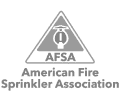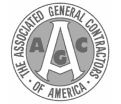Fire Extinguisher Buyer’s Guide
Buying the right fire extinguisher can make a huge impact on your building’s fire safety. But do you know what to look for when choosing a fire extinguisher?
Fire Extinguisher Classes
The different fire classifications are:
- Class A – wood, cloth, paper, plastic, etc.
- Class B – flammable liquids like gasoline
- Class C – electrical fires for wiring and appliances
- Class D – flammable metals (usually found in laboratories)
- Class K – kitchen fires (grease, hot oils, etc.)
Fire Extinguisher Types
ABC Fire Extinguishers
ABC fire extinguishers can be safely used on fires involving flammable solids, liquids, and gases as well as those involving electrical equipment. The dry powder is corrosive, so you should be careful and clean it thoroughly after you use it. It should not be your first choice of extinguishers for sensitive electrical equipment (a carbon dioxide extinguisher will work better here).
K Class Fire Extinguishers
K Class fire extinguishers are best for cooking oil or fat fires. These extinguisher types smother and cool flammable cooking fat to eliminate the risk of re-igniting. They are also perfect for Class A fires and are not electrically conducive, for added user protection.
Carbon Dioxide Fire Extinguishers
CO2 fire extinguishers protect electrical equipment without leaving residue. They can also be used on petrol and oil. Make sure, however, that you never use them on cooking fat fires—the fast discharge has the potential to spread cooking fat around, increasing the area of the fire without putting it out.
Fire Extinguisher Ratings
All fire extinguishers come with a UL rating that signifies how effective the fire extinguisher is. But the rating may be something like this:
4-A:80-B:C
If you can decode that, you might already work in the fire protection industry! For the rest of us, here’s the rating, decoded:
- A –the number in front of the “A” measures the extinguisher’s water equivalency. A single A is equivalent to 1.25 gallons of water, so 4-A has an equivalent of 5 gallons of water to battle Class A fires.
- B –the number in front of the “B” illustrates a relative measurement of how much square footage the extinguisher can cover.
- C (or K) – these letters indicate that an extinguisher can be used effectively against these fire classes.
The numbers indicate the relative strength of each extinguisher. For example, 4-A:80-B:C is four times more potent against Class A fires than 1-A:10-B:C, and 4-A:80-B:C is eight times more potent against Class B fires than 1-A:10-B:C.
Fire Extinguisher Accessories
Fire extinguisher accessories include things like:
- Vehicle Brackets
- Surface Mount Cabinets
- Recessed Cabinets
- Fire Extinguisher Covers
- Labels and Signs
If you need new fire extinguishers for your building, it helps to know exactly what you’re getting into. For more information, or to buy fire extinguishers in Houston, call Kauffman Co. today!
















